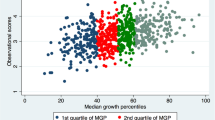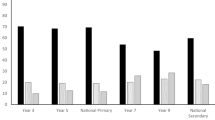Abstract
In theory, not-for-profit organizations will be characterized by higher production costs per unit of output than for-profit producers of otherwise-identical goods/services, since profit maximization implies cost minimization per unit of output; breaking even does not imply cost minimization and, indeed, may imply inflated costs. We explore the empirical validity of this hypothesis in the context of higher education. Using 1996 data, we estimate multiproduct cost functions for 1,450 public, 1,316 private, not-for-profit, and 176 private, for-profit institutions of higher education in the United States. We fail to find a statistically significant difference between for-profit and not-for-profit private providers, but do find a statistically significant difference between private, not-for-profit institutions and public institutions.
Similar content being viewed by others
REFERENCES
Baumol, W. J., Panzar, J. C., and Willig, R. D. (1982). Contestable Markets and the Theory of Industry Structure, Harcourt Brace Jovanovich, New York.
Cohn, E., Rhine, S. L. W., and Santos, M. C. (1989). Institutions of higher education as multi-product firms: Economies of scale and scope. Review of Economics and Statistics 71(2): 284-290.
de Groot, H., McMahon, W. W., and Volkwein, J. F. (1991). The cost structure of American research universities. Review of Economics and Statistics 73(3): 424-431.
Ehrenberg, R. G. (2000). Tuition Rising: Why College Costs so Much, Harvard University Press, Cambridge, MA.
Koshal, R. K., and Koshal, M. (1995). Quality and economies of scale in higher education. Applied Economics 27(8): 773-778.
Koshal, R. K., and Koshal, M. (1999). Economies of scale and scope in higher education: A case of comprehensive universities. Economics of Education Review 18(2): 269-277.
Laband, D. N., and Lentz, B. F. (2003). New estimates of economies of scale and scope in higher education. Southern Economic Journal 70(1): 172-183.
McLaughlin, G. W., Montgomery, J. R., Smith, A. W., Mahan, B. T., and Broomall, L. W. (1980). Size and efficiency. Research in Higher Education 12: 53-66.
Mocan, H. N. (1995). Quality-adjusted cost functions for child-care centers. American Economic Review 85(2): 409-413.
Nelson, R., and Hevert, K. T. (1992). Effect of class size on economies of scale and marginal costs in higher education. Applied Economics 24: 473-482.
Toutkoushian, R. K. (1999). The value of cost functions for policymaking and institutional research. Research in Higher Education 40: 1-15.
Winston, G. C. (1999). Subsidies, hierarchy and peers: The awkward economics of higher education. Journal of Economic Perspectives 13(1): 13-36.
Author information
Authors and Affiliations
Rights and permissions
About this article
Cite this article
Laband, D.N., Lentz, B.F. Do Costs Differ Between For-Profit and Not-for-Profit Producers of Higher Education?. Research in Higher Education 45, 429–441 (2004). https://doi.org/10.1023/B:RIHE.0000027394.33115.71
Issue Date:
DOI: https://doi.org/10.1023/B:RIHE.0000027394.33115.71




